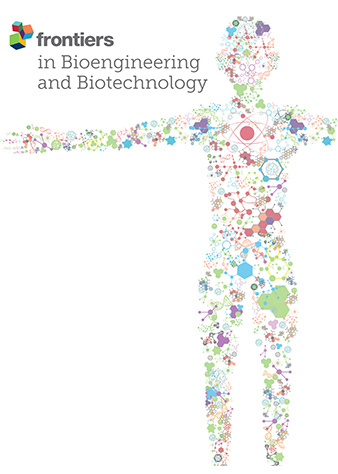Experimental investigation of a viscoelastic liner to reduce under helmet overpressures and shock wave reflections
IF 4.3
3区 工程技术
Q1 BIOTECHNOLOGY & APPLIED MICROBIOLOGY
引用次数: 0
Abstract
IntroductionShock wave overpressure exposures can result in blast-induced traumatic brain injury (bTBI) in warfighters. Although combat helmets provide protection against blunt impacts, the protection against blast waves is limited due to the observed high overpressures occurring underneath the helmet. One route to enhance these helmets is by incorporating viscoelastic materials into the helmet designs, reducing pressures imposed on the head. This study aims to further investigate this mitigation technique against under-helmet overpressures by adding a viscoelastic liner to the inside of a combat helmet.MethodsThe liner’s effectiveness was evaluated by exposing it to free-field blasts of Composition C-4 at overpressures ranging from 27.5 to 165 kPa (4 - 24 psi) and comparing shock waveform parameters to an unlined helmet. Blasts were conducted using an instrumented manikin equipped with and without a helmet and then with a helmet modified to incorporate a viscoelastic liner. Evaluation of blast exposure results focused on the waveform parameters of peak pressure, impulse and positive phase duration.ResultsThe results show that peak overpressure was higher when wearing a helmet compared to not wearing a helmet. However, the helmet with the viscoelastic liner reduced the average peak overpressures compared to the helmet alone. For the lowest overpressure tested, 27.5 kPa, the helmet liner decreased the overpressure on the top of the head by 37.6%, with reduction reaching 26% at the highest overpressure exposure of 165 kPa. Additionally, the inclusion of the viscoelastic material extended the shock waveforms’ duration, reducing the rate the shock wave was applied to the head. The results of this study show the role a helmet and helmet design play in the level of blast exposure imposed on a wearer. The testing and evaluation of these materials hold promise for enhancing helmet design to better protect against bTBI.减少头盔下超压和冲击波反射的粘弹性衬垫的实验研究
导言:冲击波超压暴露可导致作战人员遭受爆炸诱发的创伤性脑损伤(bTBI)。尽管作战头盔可提供对钝器冲击的保护,但由于观察到头盔下有很高的过压,因此对爆炸波的保护有限。增强头盔性能的途径之一是在头盔设计中加入粘弹性材料,从而降低施加在头部的压力。本研究旨在通过在战斗头盔内部添加粘弹性衬垫,进一步研究这种缓解头盔下超压的技术。方法通过将衬垫置于超压范围为 27.5 至 165 kPa(4 - 24 psi)的 C-4 组分自由场爆炸中,并将冲击波形参数与未添加衬垫的头盔进行比较,来评估衬垫的有效性。使用装有仪器的人体模型进行了爆炸试验,该人体模型先是配备了头盔,然后又没有配备头盔,最后才配备了经过改装的粘弹性衬垫头盔。结果表明,戴头盔与不戴头盔相比,过压峰值更高。不过,与单独佩戴头盔相比,带有粘弹性衬垫的头盔降低了平均峰值超压。在测试的最低超压(27.5 千帕)下,头盔衬垫使头顶的超压降低了 37.6%,在最高超压(165 千帕)下降低了 26%。此外,粘弹性材料的加入延长了冲击波的持续时间,降低了冲击波作用于头部的速度。这项研究结果表明了头盔和头盔设计对佩戴者所受爆炸冲击程度的影响。对这些材料的测试和评估有望改进头盔设计,从而更好地保护人们免受创伤性脑损伤。
本文章由计算机程序翻译,如有差异,请以英文原文为准。
求助全文
约1分钟内获得全文
求助全文
来源期刊

Frontiers in Bioengineering and Biotechnology
Chemical Engineering-Bioengineering
CiteScore
8.30
自引率
5.30%
发文量
2270
审稿时长
12 weeks
期刊介绍:
The translation of new discoveries in medicine to clinical routine has never been easy. During the second half of the last century, thanks to the progress in chemistry, biochemistry and pharmacology, we have seen the development and the application of a large number of drugs and devices aimed at the treatment of symptoms, blocking unwanted pathways and, in the case of infectious diseases, fighting the micro-organisms responsible. However, we are facing, today, a dramatic change in the therapeutic approach to pathologies and diseases. Indeed, the challenge of the present and the next decade is to fully restore the physiological status of the diseased organism and to completely regenerate tissue and organs when they are so seriously affected that treatments cannot be limited to the repression of symptoms or to the repair of damage. This is being made possible thanks to the major developments made in basic cell and molecular biology, including stem cell science, growth factor delivery, gene isolation and transfection, the advances in bioengineering and nanotechnology, including development of new biomaterials, biofabrication technologies and use of bioreactors, and the big improvements in diagnostic tools and imaging of cells, tissues and organs.
In today`s world, an enhancement of communication between multidisciplinary experts, together with the promotion of joint projects and close collaborations among scientists, engineers, industry people, regulatory agencies and physicians are absolute requirements for the success of any attempt to develop and clinically apply a new biological therapy or an innovative device involving the collective use of biomaterials, cells and/or bioactive molecules. “Frontiers in Bioengineering and Biotechnology” aspires to be a forum for all people involved in the process by bridging the gap too often existing between a discovery in the basic sciences and its clinical application.
 求助内容:
求助内容: 应助结果提醒方式:
应助结果提醒方式:


